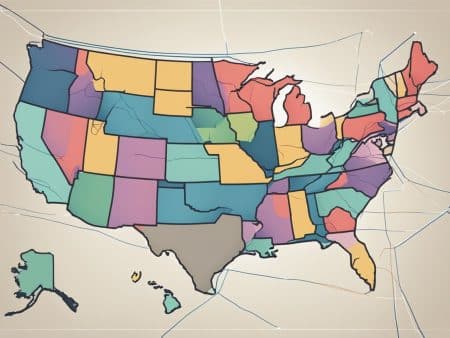Poker cheating scandals have cost players and operators millions, with a single case resulting in $22 million stolen from players through sophisticated fraud schemes. The incidents range from Mike Postle’s $250,000 suspicious winning streak to the Black Friday shutdown that revealed widespread security vulnerabilities across online poker platforms.
Major poker sites including PokerStars and Full Tilt Poker faced elaborate fraud schemes involving “Super User” accounts that provided unfair advantages through access to opponent hole cards. These security breaches prompted fundamental changes to game monitoring and player protection protocols across the industry.
This guide examines the most significant poker cheating cases, detailing the methods used, how the perpetrators were caught, and the lasting impact on poker security measures. The cases demonstrate why robust verification systems and advanced monitoring tools have become essential for protecting game integrity in both live and online poker environments.
Poker Cheating Methods Through The Years
Poker cheating tactics show clear progression from basic card manipulation to complex digital schemes. The methods reveal increasingly sophisticated approaches to gaining unfair advantages at the poker table.
Basic Deception to Modern Technology
Card marking stands as poker’s oldest deception method, starting with simple bends or scratches. Stefano Ampollini demonstrated modern sophistication, using infrared contact lenses with specially marked cards.
Today’s cheaters employ miniature cameras and electronic tools that capture card information during deals. These devices connect to microscopic earpieces, requiring magnets for removal. Common items like power banks and pens now double as cheating tools.
Digital Age Cheating Tools
Online poker faces unique security challenges. Real-time assistance (RTA) tools and poker bots threaten game fairness. High-stakes tournaments deal with “ghosting” – skilled players secretly controlling others’ accounts during crucial hands.
Current Cheating Methods
Popular cheating techniques target both live and online games:
- Collusion rings sharing hole cards through messaging apps
- Multiple account operation for unfair advantages
- Hand history collection to build player profiles
Card marking technology now includes IR-absorbing ink on card edges. Hidden cameras disguised as watches, ashtrays and car keys give cheaters real-time opponent information.
Notable Poker Cheating Cases
Two major poker cheating scandals highlight security weaknesses in both live and online poker rooms.
Mike Postle’s Suspicious Streak
Mike Postle won roughly $250,000 playing low-stakes games at Stones Gambling Hall between July 2018 and September 2019. Poker commentator Veronica Brill spotted unusual patterns in Postle’s play, noting his perfect decision-making in key situations.
The poker community found Postle making statistically improbable plays while frequently looking at his phone beneath the table. This behavior marked a change from his previous habit of keeping his phone visible on the rail.
Players filed a $30 million class-action lawsuit against Postle, later dismissed with prejudice. Postle countered with a $330 million defamation suit against poker pros Daniel Negreanu, Phil Galfond and others. He later dropped the suit, leaving him with substantial legal costs.
Russ Hamilton’s Ultimate Bet Scandal
The Ultimate Bet case ranks among poker’s biggest cheating operations. Hamilton, 1994 WSOP Main Event champion, used “God Mode” software access to see opponent hole cards. The scheme’s scope:
- Hamilton personally took $16-18 million, confirmed in leaked audio
- Total player losses reached $50 million
- Thousands lost money over multiple years
Kahnawake Gaming Commission found 117 usernames on 23 accounts linked to the operation. Most devices and IP addresses traced back to Hamilton.
Ultimate Bet paid $1.5 million in fines plus $22 million player reimbursement. Hamilton avoided criminal charges but lost his place among WSOP champions – the only winner excluded from the banner display.
Uncovering Poker’s Biggest Cheaters
Player vigilance combined with modern technology exposes poker cheating schemes across live and online platforms.
Community Detection Efforts
The 2+2 poker forum leads community-based fraud detection efforts. Players pool hand histories and analyze suspicious patterns, creating an effective crowdsourced security network. This approach proved valuable during the 2007 Ultimate Bet/Absolute Poker superuser scandal investigation.
Technology-Driven Detection
Modern cheat detection relies on sophisticated AI systems analyzing player data. Current collusion detection tools achieve 95% accuracy rates. Security protocols include:
- Pattern analysis for unusual betting behavior
- IP address monitoring for account sharing
- Algorithm-based gameplay tracking
- Live action monitoring systems
Notable Fraud Discoveries
Veronica Brill stands out among poker whistleblowers. Her role as Stones Gambling Hall commentator led her to question Mike Postle’s play patterns. Despite initial skepticism from management, Brill’s persistence exposed Postle’s $300,000 winning streak in small-stakes games.
Tracking software like Poker Tracker and Hold’em Manager helps identify suspicious behavior. These tools work alongside Smarthand and Sharkscope to spot various cheating methods.
The high-stakes community now pushes for a universal cheater blacklist. GGPoker’s September 2020 action – banning 40 accounts and seizing $1.2 million – strengthens this movement. Yet many sites maintain cheater confidentiality, sparking demands for greater transparency.
Poker Industry Changes After Major Scandals
Cheating scandals reshape poker security standards across live and online platforms.
Online Poker Trust Challenges
Player confidence drops as sophisticated cheating methods surface. Online poker rooms scramble to fix security gaps after high-profile incidents. GGPoker’s recent player refunds following security breaches highlight financial impacts.
Professional players question online game integrity. Poker pro Maria Konnikova advocates banning electronic devices at tables. Many players turn to live cash games, seeing them as more trustworthy for serious earnings.
Security Upgrades
WSOP leads security changes with December 2023 rules banning electronic devices from tables and rails. New policies stop spectator coaching during play.
Casino and online poker rooms add security features:
- UV-visible authentication marks
- AI-powered pattern detection
- Device-blocking equipment
- Player screening systems
- Enhanced login security
Borgata Casino shows these changes through new chip designs with advanced security features. ACR Poker uses AI and machine learning to spot cheaters.
Security experts note perfect protection remains impossible as cheating methods advance. Online platforms face extra challenges balancing marketing needs with security. MGM’s influencer camera policy creates new risks.
Poker Security Measures Today
Poker rooms deploy multiple security layers to prevent cheating across live and online games.
Modern Security Standards
Poker operators require Know Your Customer (KYC) verification from all players. Players must verify personal details, including name, birth date, address, and official documents. Most platforms now demand email and mobile verification before processing transactions.
Poker rooms strengthen protection through layered security systems. GTO Wizard offers Fair Play Check, letting players confirm board solution timing. This tool spots real-time assistance (RTA) use and protects game fairness.
Player Identity Systems
Modern poker platforms require specific documentation:
- Government photo ID
- Current utility bills
- Bank records
- Phone verification
- Email validation
Several sites now use biometric checks including fingerprints and facial scans. These tools serve legal compliance, dispute handling, and fraud blocking.
Cheating Prevention Technology
RFID cards dominate major casino security at MGM Grand and Bellagio, tracking card movement and status. Blockchain solutions protect player data and game transactions from tampering. Smart algorithms spot suspicious betting patterns quickly.
GGPoker Network shows strong security commitment, removing RTA users through enhanced detection. PokerStars Live runs confidential reporting systems for thorough incident investigation. Regular security checks find weak points before exploitation.
Specialized security teams now focus solely on game protection. These groups develop new tools and methods for maintaining fair play. Their partnerships with poker operators help eliminate unfair advantages across all game formats.
Security Lessons from Poker Scandals
Major cheating cases reshape poker security standards across the industry. Mike Postle and Russ Hamilton’s schemes cost players millions but pushed gaming protection forward. Today’s poker rooms use RFID cards, blockchain systems, and advanced monitoring tools.
Player communities provide crucial defense through active monitoring and reporting. Modern verification systems paired with AI detection make cheating harder than ever. Still, security teams face ongoing challenges as cheating methods advance with technology.
Poker security success depends on both cutting-edge tools and human oversight. While perfect protection remains impossible, cooperation between poker sites, security experts, and players maintains game integrity. These efforts keep poker true to its roots – testing skill and strategy in fair competition.



